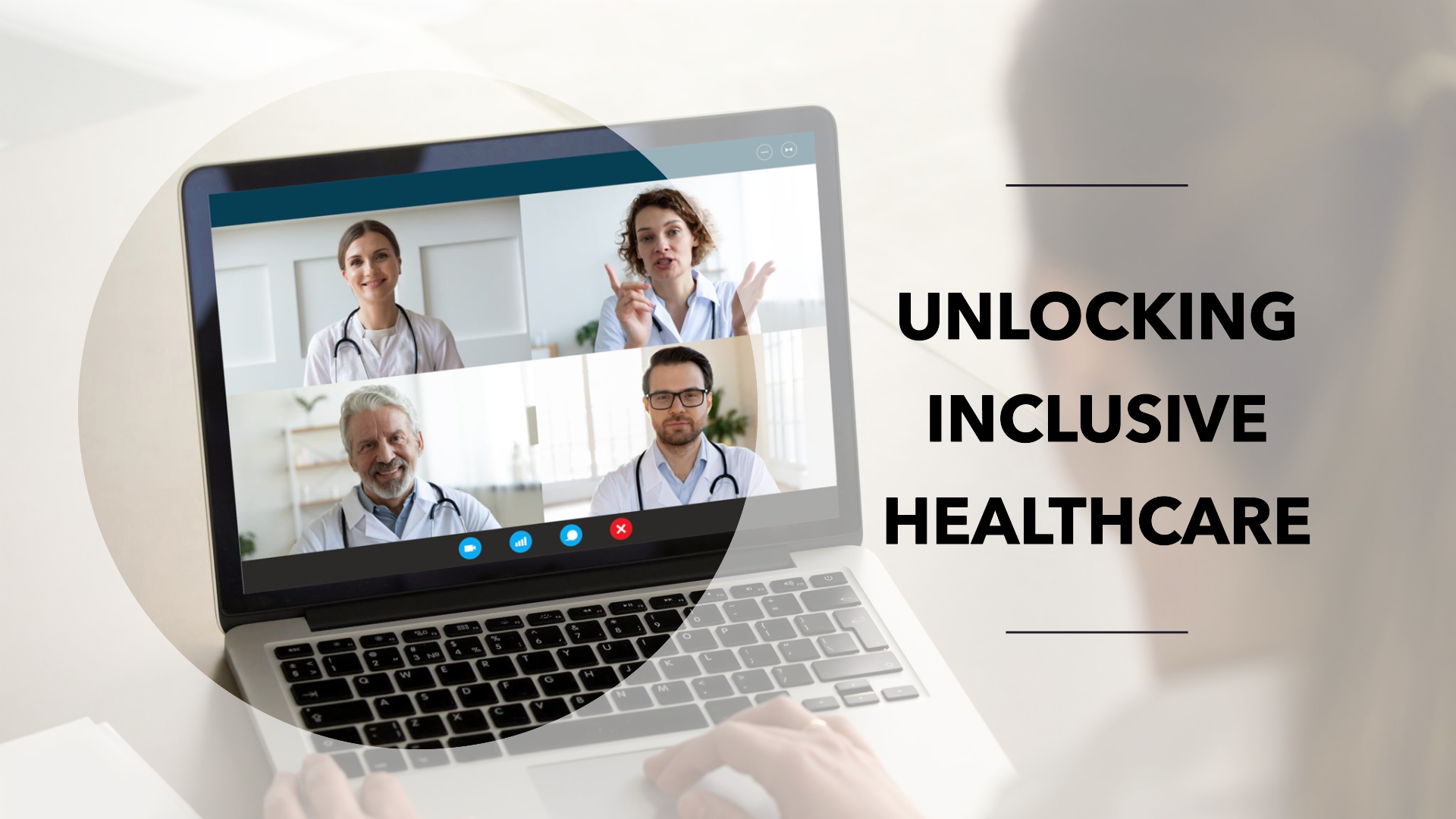Digitization in healthcare will improve medical device innovation, data collection and implementation.. While digitization in healthcare offers many benefits, it also introduces various challenges due to the accumulation of sensitive data.
One of the most exciting developments in digital healthcare is the widespread use of telehealth. But it isn’t just a matter of being able to access medical care when you need it. The need for medical care also increases as people live longer, and many of them are living in areas where they are unable to travel to a hospital. The increase in digitization in healthcare is important because people are trying to attain more informed decisions.
People with chronic conditions or ageing parents can’t always get to the doctor, and so they increasingly turn to telehealth platforms such as Skype or Zoom. This is good news for everyone: better quality of life, improved health outcomes and lower costs. But there are also some challenges for telemedicine.
For example, patients often don’t recognize that their condition has changed since they were last seen by a doctor or other health professional; this is because their symptoms may have improved but their physical condition has not changed. In addition, some conditions require a lot of physical therapy that isn’t covered under medical insurance (e.g., Parkinson’s disease).
Why digitization in healthcare is important?
The world is changing and healthcare is no exception. There is a big shift in how we care for our patients and in how we interact with them. The increase of Internet access, more data and other technologies are making it possible to look after more people while at the same time making our lives easier.
What’s changed?
- Healthcare providers can access patient data almost anywhere, anytime to improve care, prevent harm and save lives. The healthcare industry has grown into an $8 trillion industry with a growing need for better research and technology.
- The resulting consolidation of healthcare delivery is creating new opportunities for both private companies and public institutions to improve the quality of healthcare.
- This information has become a valuable asset for business as well as public organisations such as governments, hospitals, insurers or universities that want to improve the quality of their services. They can use this data to target patients or join their network of providers which leads to improved service delivery or even save money by providing better quality care at a lower cost.
And the exciting thing about all this? It’s all happening without human intervention.
The key question here is: how do we make sure that it happens? What steps can you take to ensure that what were once just ideas are now being put into practice in your organisation? How will you involve your teams (healthcare providers and outside suppliers) in this process? How do you ensure that they partner with each other so they work together towards successfully digitizing medicine? What kind of incentives will you give them to ensure it happens? How will you make sure that there are adequate security measures put in place around all this information so that someone who wanted to take advantage doesn’t do so easily or without your knowledge or consent?
Challenges of digitization in healthcare
The recent cyber security crisis in the healthcare industry is the case study of how digitization in healthcare can be a critical challenge. A lot of data is being generated and stored (which makes it easier for cybercriminals to access, hack and steal) but also a lot of data is being generated and stored (which makes it harder for them to get access to). In fact, medical records are an example of that: both cases are important, but one is more important than the other.
The amount of data generated by devices (e.g., mobile phones) and other medical devices is growing, and this data is inevitably stored on a large scale. This poses a lot of challenges to the healthcare industry and there is a push towards digitization in order to better handle this challenge. In the healthcare industry, there are numerous challenges with regard to health data management that need to be overcome in order for it to become an efficient way of working.
One of the main issues is security and privacy concerns that come with computers and mobile devices having access to patient information, both in terms of their profiles as well as their digital footprint. This can be solved by adopting security protocols such as HIPAA, which makes sure that information about patients is safeguarded by legal means (e.g., strict limitations on the sharing of information). However, most countries are still hesitant to implement such regulations, particularly since some medical professionals might not have been educated on the importance of privacy.
How digitization can improve healthcare
The amount of data generated by devices (e.g., mobile phones) and other medical devices is growing, and this data is inevitably stored on a large scale. This poses new challenges for healthcare organizations, including the need to secure information in a way that is cost-effective, accessible, secure and reliable.
In this post-digital age, healthcare organizations are increasingly being challenged by the fact that they don’t have the data storage capacity they need to store all this information. The challenge becomes: how can we make use of our data while keeping costs low?
The answer lies in harnessing the power of digitization. Digital technologies are already playing an important role in improving clinical outcomes and reducing health care costs; digitization allows us to store clinically relevant clinical information in a way that was never possible before. In addition, digital technologies will allow us to use our data more efficiently, allowing us to streamline processes and reduce costs for both providers and patients alike.
We believe that digital technology brings many benefits to all parties involved in healthcare; moreover, it can also be used as an opportunity for business-to-business (B2B) partners interested in increasing patient acquisition or improving patient satisfaction. Digitization in healthcare is so important that it makes the care affordable and accessible to all. Digitization in healthcare has many advantages for doctors and patients.
Digitization in practice
Digital health is the term used to refer to a broad category of technologies meant to help people improve their quality of life. The technology can be implemented in many different ways:
- Personalization: A technology that allows a doctor or nurse to provide personalized information based on a patient’s specific medical condition,
- Consent: Technological enabling tools that enable patients to override the automatic decision-making process regarding medical treatment by consenting, taking into account the patient’s preferences
- Health management: Technologies that help doctors manage and monitor patients’ health status, and personalize medical treatment based on the patient’s specific needs.
- Health care system interoperability: A technology that enables data from different health care institutions (e.g., hospitals and clinics) to be interoperable using standard protocols and formats
- Patient-physician collaborations: The cross-training of physicians from various specialties with patients from various specialties (e.g., orthopedics, neurology, cardiology) in order to treat particular problems collectively, where possible
If you have ever been to a digital health conference, you’ve likely heard the term “digital human”. The idea that information technology can make patients healthier is on its face far-fetched — but it’s actually a lot closer to reality than you might think.
The concept of “digital human” is not new; the term has been around for over a decade and was originally used to refer to the idea of using a digital signal carrier (the electromagnetic wave) at the cellular level in order to create a near-humanlike interface with medical equipment. However, it has quickly broadened its meaning beyond simple interface design for new medical devices (e.g., implantable cardiac pacemakers) and began to be used more generally to cover any technology which involved electronic signals at the cellular level.
These days, the term “digital human” is used in reference to all forms of hardware, software, or both which interact with patients or bring their environment into contact with them in some way (such as telepresence). However, this does not mean that these technologies have no impact on patient care: they do. Today there are literally thousands of biomedical devices out there that interact with patients using various digital methods (e.g., implanted cardiac pacemakers), and most of them are controlled via smartphone apps or other online applications — often referred to as “smartphones without an app store”.
Advantages of digitization in healthcare
The digitization of healthcare systems has seen a rapid advancement in the recent years. Digitization can be one of the most promising and often overlooked opportunities for healthcare. The amount of data generated by devices (e.g., mobile phones) and other medical devices is growing, and this data is inevitably stored on a large scale, e.g., with 3G/4G networks.
This poses a number of questions: Is this data perfectly safe? How do we store it? How do we use it?
There are several solutions that can be taken: One solution is to encrypt the data, which means storing and protecting the encrypted data on an external device (e.g., hard drives), and decrypting it once you are in your office or clinic. This could also be done with cloud storage, where case-by-case encryption is provided based on business needs/requirements (e.g., HIPAA compliance).
Another solution is to do away with all forms of storage altogether and just access the information from any device instead — even if you are not physically in your office or clinic. This is called “hyper-banking”, where you can access information from anywhere via an internet connection (or smartphone).
This might take some time to perfect, but if done well it would lead to a reduction in bandwidth costs as well as storage costs — not to mention that there would be no need for backups! The same applies to text documents, which would just get automatically backed up once they were accessed by a specific user; besides, you can only back up what you have actually used! As long as there are enough people who use the system online and who want their files stored there, then this will keep happening – at least until someone figures out how to reverse them! It’s hard work though – but still worth trying out!
I was inspired to write this article after my conversation with Daniel Maier-Johnson – Chief Information Security Officer (CISO) at Asklepios and Jens Koegler – Healthcare Industry Director EMEA at VMware. In this episode, we talked about digitization in healthcare and in the importance of security. A very prominent and important topic in Healthcare, as data security is crucial to ensure trust amongst patients, clinicians and all the stakeholders in healthcare. Very often nowadays we hear organizations being victims of data breaches and ransomware attacks.
Watch Episode #61 of Digital Health & Wearables Series:
Contact us for more relevant details. To find out more about how we can help you with your Digital Healthcare Transformation, Healthcare organizational growth, or Healthcare brand positioning, please get in touch via phone +44 (0) 203 3620421 or via e-mail: info@digitalsalutem.com





